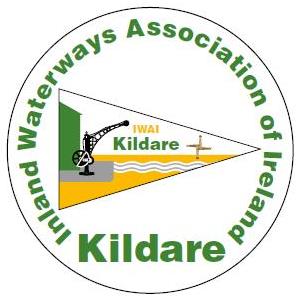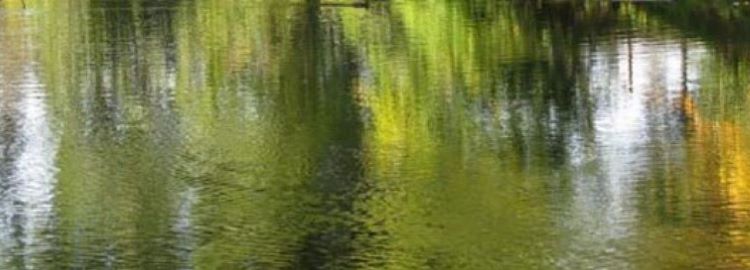BJG writes on the Irish Waterways History “I invited Adele Picard to write a piece explaining why canal-based boaters are distrustful of Waterways Ireland. I am very grateful to her for agreeing to do so. The post’s appearance here does not mean that Adele and I agree on all the issues, but we are agreed that relationships are important and that the relationship between WI and canal-based boaters needs to be improved.”
Relationships between WI and canal boaters
This piece explores a range of issues faced by canal users in recent years.
I set up home in 2003 when my partner and I bought our first narrow boat Chimwemwe. We lived in Lowtown and enjoyed the lifestyle on board so much, we bought a wide-beam barge, Rigmarole, in 2005. We moved ashore in 2007 and soon after got married and started a family. Fortunately, my two little boys are just as mad about the boat as we are and we enjoy cruising all over Ireland on the inland waterways.
In this piece, I will be talking about issues that I have witnessed myself as well as first-hand accounts that have been related to me by others. I would like to point out at this stage that what follows is my personal opinion and is in no way claimed to be representative of views that may be held by any Irish boating organisations where I am a member.
Lack of regulation and enforcement of bye-laws has always been a contributing factor to the issues experienced by users of the canals and River Barrow. In the current times as Waterways Ireland (WI) attempts to ‘throw down the gauntlet’ and assert some kind of control over the navigations, a deepening of these issues is inevitable.
Control = a means of limiting or regulating something in order to mitigate any inherent risk that may occur.
At the moment, Waterways Ireland’s reputational risk among the boaters on the canals has been realised but can this risk now be mitigated?
Taking control of the electricity
During my time as a liveaboard in Lowtown, many boaters availed of the precious electricity supply, regardless of distance from their vessel to the power points. This resulted in long leads being run down the towpaths. When the clampdown started on this sort of thing by WI in 2006, a warning was shot across the bows and soon after the electricity was removed. In some cases, this action resulted in vulnerable people being left without shore power. People felt that this situation could have been handled better by WI. On the other hand, everybody knew that, underneath it all, this situation represented a serious health and safety violation. This for me was the first indication that WI was putting controls in place to minimise their exposure to risk.
The Lowtown fiasco
In early 2012, after WI pulled out of a deal with Robert Few and Vita Marine on the expansion of Lowtown Marina, a meeting was held with the residents, a representative from WI and the management of Vita Marine. What came out of that meeting was that everybody moored there had to leave within the following 30 days due to health and safety concerns.
This is where we as a boating community started to engage with WI on the issues, mostly through the Property and Legal section. The frustration of going back and forth with emails and letters with no clear answers forthcoming from WI was disheartening. Furthermore, the action led to the desolation and abandonment of Lowtown. This is when we started to open our eyes to the lack of willingness from WI to engage with the boating community. Legal proceedings began shortly afterwards, and we got very little information after that.
Rollout of new permits
The introduction of new permits in 2012 was at first to me a positive step, as one of the main issues on the canal is the number of sunken vessels; there was a real need to implement controls where every vessel is registered so owners can be contacted.
Then you go a little deeper and realise that these permits come with new issues. I would like to make it very clear that I have no problem paying for permits, but the following issues have not been dealt with to my satisfaction:
• the legality of the new indemnity clause
• the lack of an appeals process when and if there is action taken
• the need for a deposit
• The lack of a dispute resolution mechanism
Although WI will say that they are within their rights to introduce reasonable changes to the terms and conditions of their permits, in my opinion these changes are not reasonable. Furthermore, the complaints procedure is frustrating due to a weak corporate governance structure.
Extended Mooring Permit (EMP)
It was after I had given up the liveaboard lifestyle, although still using the boat regularly, that I noticed that far fewer of the usual gang were travelling by boat to attend social gatherings along the waterways. I subsequently found out that the commonly accepted gentlemen’s agreement that many liveaboards have in relation to their spots had been broken. A boater returning from a rally had their spot taken. This kind of behaviour added to the already problematic lack of movement of some boats that has raised debate before. People were afraid to move!
The addition of the EMP, I felt, could stop this situation, but friends of mine bought one in 2013 to find that when they went out for the day their spot was occupied on their return. A WI official said nothing could be done. The EMP is now not fit for the purpose intended.
Also for those of us who like to move around the system there seemed to be no options: we didn’t really need an EMP, as we would be in many different locations over the season and one location in the winter.
Then the ‘stickering’ started in selected areas on the canal for those in breach of the five-day rule. In one instance boats were being stickered for the breach in Lowtown, while less than a mile down the road in Robertstown boats that hadn’t moved for years were not stickered.
Furthermore, boats that wanted to move on the Royal were encountering their own problems in relation to low water levels, canal closures and the difficulties lifting Newcomen Bridge.
Of course, a barrage of correspondence ensued from boaters with WI on all these issues only to be met with what was becoming the standard with WI: more emails and unclear answers. It’s hard to explain this frustration but what it feels like is someone just shrugging his or her shoulders at you and saying, “I don’t know”. Not a good way to treat your customer base in these times of expected transparency and professional standards in public service.
Liveaboards
I think on the whole, liveaboards in general would welcome regulation on mooring as long as the terms and conditions are not too harsh and the price is right. I think the terms and conditions, currently on offer, are too stringent; they could be improved by consulting with customers.
For example, during the planning process on the proposal to build jetties in Sallins Harbour submissions were made to Kildare County Council in August 2012 asking that Sallins should not go down the same road as the jetties in Shannon Harbour and Grand Canal Dock, which were lying empty at the time.
Following the submissions, WI did consult with the boating community and ‘a deal was struck’. This shows how a positive approach and engagement can make a real difference to our waterways and the communities on and around them.
The Sallins lockout
This positive development now has a shadow lying over it. Subsequent to the start of the consultation period on the 2014 proposed bye-law amendments, a campaign was launched on social media by concerned boaters and support grew rapidly. A peaceful protest was planned for Sallins on 25 January 2014. What follows are a series of actions by WI:
• on Thursday 23 January a Marine Notice issued stating that the canal at Sallins would be closed from Monday 27 January
• on Friday morning WI blocked the western entrance to the harbour and removed the racks from lock 14 on the eastern side, stranding 6 boats between locks 13 and 14
• a Marine Notice issued after the fact stating that WI were now closing the canal on 24 January
There was a serious risk to those stranded boats not only from a health and safety viewpoint but also because most of them were too big to turn around on that stretch of canal.
Conclusion
My opinion on the events of the recent past is that WI has a lot to do in order to improve communication with canal boaters. If the true purpose of these bye-law amendments is to
“Develop the canals as a vibrant recreational waterway for all users by enhancing Waterways Ireland’s ability to manage the investment in infrastructure and facilities on the canals for both the navigational and recreational user”
… The only way forward is for WI to engage with the communities both on and around the waterways.
© Adele Picard 2014

